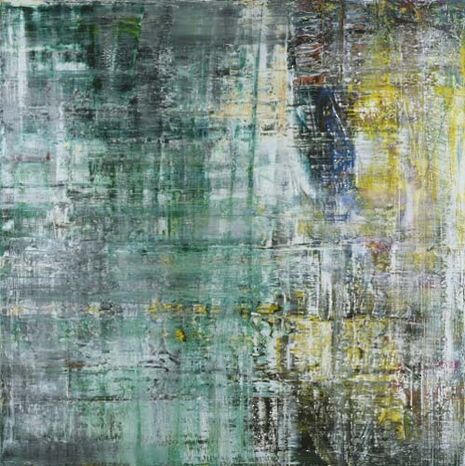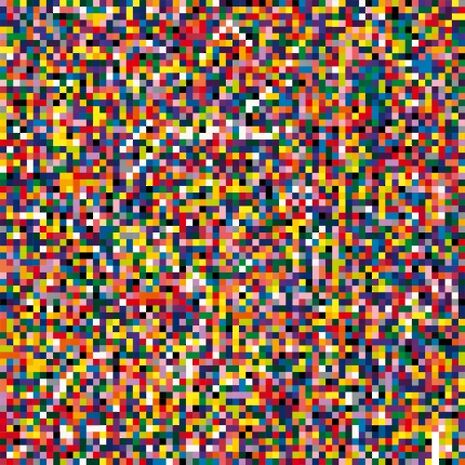Taking a Chance
Anna Souter looks at the importance of losing control in art and music

In primary school, one of my teacher's favourite methods for quietening a class of giggling girls was to put on a piece of classical music and tell us to interpret it in another medium. My medium of choice was crayon. Chewing thoughtfully on an empty ink cartridge, I would slowly draw my chosen colour across the paper, switching crayons at cadences and drawing increasingly feverishly until the music reached a climax.
Looking down, I was presented with a wax-encrusted piece of paper, brown from the confluence of my inspired colour choices. As it turns out, Tchaikovsky's Dance of the Sugar Plum Fairy is too complex to be condensed onto a single piece of paper.
Other artists have more successfully attempted to represent the meeting-points of art and music. One of these artists is John Cage, whose centennial falls this year. Cage will go down in history as an exponent of experimental music; his controversial 4'33'' will probably prove polemical for musicologists for the next hundred years.
However, Cage's talents were not limited to music; he was in many ways a Renaissance man living in the Twentieth century. Philosopher, artist, poet, composer and (strangely enough) mycologist: his extensive work sheds light on a cross-section of twentieth-century culture.
Cage will be remembered particularly for his experiments with chance. In 1950, he received a copy of the ancient Chinese text, I Ching. The book contains a system of divination in which outcomes are determined solely by chance. Cage employed this system to compose his Music of Changes (1951), using chance to decide on the pitch and length of each note. He simplified the Chinese system into one determined first by tossing a coin and later by a computer program generating random figures.
In the late '70s, Cage began to create prints for the Crown Point Press, despite having little formal artistic training. Many of these also owe their composition to factors of chance. In a series of prints based on Zen gardens in Japan, he takes fifteen small stones and arranges them within a grid according to the random generations of his computer program. Drawing round the stones, he creates an impression of carefully contained chaos.
Cage's experiments with chance appealed to another great artist of the Twentieth century, Gerhard Richter. Whilst the two men never met, they were both equally impressed with one another's work. Richter's masterly series of paintings entitled Cage pays testament to their mutual artistic and intellectual respect.
The Tate Modern's recent retrospective for Richter, Panorama, seems to take pains to highlight the artist's reliance on source materials for his paintings. These sources range from photographs, other artists and artistic movements to the paint colour charts found in DIY shops.
The humble origins of the latter didn't prevent it from inspiring a series of paintings made around the time Cage joined the Crown Point Press. These works are created from a number of individually painted ceramic tiles arranged on a grid according to chance, using a computerised generator much like Cage's.

Richter revived this technique more recently when, in 2007, he created his masterpiece 4900 Colours. The work consists, as you might expect, of 4900 colours, all differing slightly in shade and tone; even the most artistic eye would be hard pressed to distinguish every separate colour. He invites the viewer to consider the juxtaposition of colours, demonstrating how our perception of a pigment changes according to its context.
Richter also makes more subtle use of chance throughout the canon of his work. His Cage (2006) series is arguably not only his best work but one of the most exciting artistic offerings so far this century. The series is afforded its own room in the Tate; only the luckiest visitors have it to themselves.
The paintings are created by building up layers of paint with a squeegee. As a disclaimer, this is a technical term. It has always amazed and delighted me that such grown-up art can be created with such a silly-sounding tool. The squeegee drags one colour over another semi-dry layer of paint. Richter can't know what effect the interaction of the pigments will have; in some areas the paint will be built up thickly, in others the squeegee will scrape away a layer instead of adding one. Although the artist controls the choice of colour, chance plays a crucial role in the composition.
Richter painted the series whilst listening to Cage's music, but there is no direct correlation to a specific piece. For me, the paintings best represent Cage's 'silent' piece, 4'33''. Of course, the point of this work is not the absence of music, but the ambient noises you hear in the supposedly 'silent' auditorium: the shuffling of programs, the scraping of a chair, a muffled cough. No two performances of this piece will be exactly alike.
The abstract nature of the Cage series forces the viewer to pay close attention to the paint itself, to the method of artistic composition. The blurred greys and reds call to mind sound waves; the viewer gets an acute sense of awareness as the paint washes over their consciousness.
For Richter, as for Cage, there is always an element of chance in art. No matter how painstakingly the process of composition is controlled, the finished product is never quite that, finished. Each time you view a painting or listen to a piece of music, the experience is slightly different according to its context. The indeterminate elements of everyday life spill over into our experience of art and we find ourselves, like the artist, taking a chance.
 News / Eight Cambridge researchers awarded €17m in ERC research grants27 December 2025
News / Eight Cambridge researchers awarded €17m in ERC research grants27 December 2025 News / Clare Hall spent over £500k opposing busway 24 December 2025
News / Clare Hall spent over £500k opposing busway 24 December 2025 Comment / League tables do more harm than good26 December 2025
Comment / League tables do more harm than good26 December 2025 Comment / The ‘class’ of Cambridge24 December 2025
Comment / The ‘class’ of Cambridge24 December 2025 News / Caius mourns its tree-mendous loss23 December 2025
News / Caius mourns its tree-mendous loss23 December 2025








